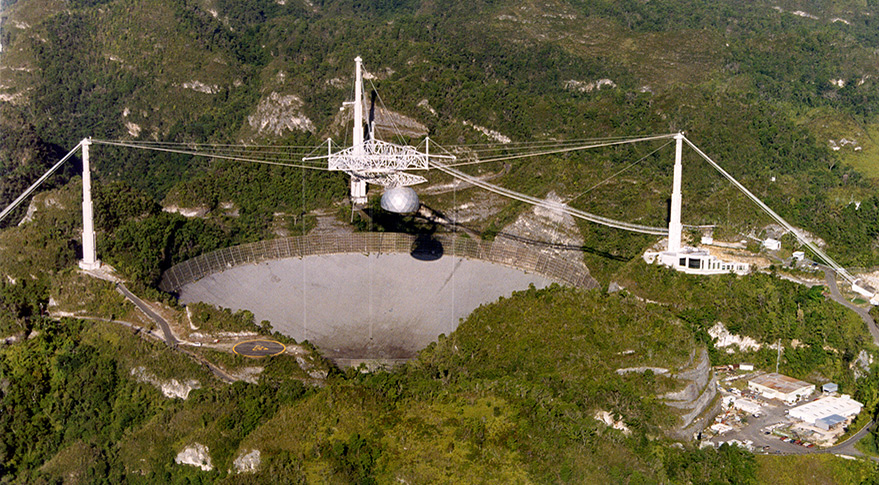Damage to Arecibo Less Than Feared

ADELAIDE, Australia — The giant Arecibo radio telescope in Puerto Rico sustained less damage from Hurricane Maria than originally thought, and may have little effect on plans to transfer its operations, a National Science Foundation official said Sept. 27.
Ralphe Gaume, deputy division director for the NSF's Divison for Astronomical Sciences, told a meeting of the Astronomy and Astrophysics Advisory Committee in Alexandria, Virginia, that major elements of the observatory appeared to survive the powerful hurricane last week that devastated the island.
"Despite the initial reports of significant damage, it turns out the damage is not anywhere near as serious as we thought," he said.
One element of the telescope that was damaged was a "line feed," or antenna, about 30 meters long used to receive and transmit radio signals at a frequency of 430 megahertz, primarily for atmospheric studies. The line feed, suspended from the top of the telescope, fell and crashed through the dish below, damaging about 30 panels out of the nearly 40,000 that make up the dish, he said.
A separate Gregorian mount used for radio astronomy observations was not seriously damaged. "The Gregorian was inspected yesterday," Gaume said. "That seems to be intact."
A separate 12-meter dish at the observatory, built several years ago, was initially reported to be destroyed. "That turns out not to be the case," he said. "Communications has been a real difficult problem. Information as far as what the damage is is still coming in, but overall, the word that we have is much more optimistic than what initially heard from Arecibo."
The hurricane came at a particularly sensitive time for Arecibo, as NSF contemplates its plans for divesting the telescope. NSF previously announced it would seek to bring in new partners to take over much of the telescope's operations, which currently costs NSF about $8 million annually.
Get the Space.com Newsletter
Breaking space news, the latest updates on rocket launches, skywatching events and more!
The NSF solicited proposals earlier this year from private organizations to take over much of NSF's costs of operating Arecibo, with NSF's share dropping over a five-year period to $2 million a year. NASA, which provides about $4 million a year for planetary radar activities there, would continue to do so even as NSF's share of the telescope's costs dropped.
NSF published a final environmental impact statement Aug. 4 that examined the effects of various options, ranging from divestment, NSF's preferred option, to closure and demolition of the observatory. NSF was free to make a final "record of decision" on Arecibo's future once a 30-day waiting period expired in early September.
Gaume said there had been slight delays in that process because of Hurricane Maria, but did not anticipate a major delay in the release of the record of decision about NSF's plans for Arecibo. "We're anticipating the record of decision to be issued in early fall," he said.
This story was provided by SpaceNews, dedicated to covering all aspects of the space industry.
Join our Space Forums to keep talking space on the latest missions, night sky and more! And if you have a news tip, correction or comment, let us know at: community@space.com.

Jeff Foust is a Senior Staff Writer at SpaceNews, a space industry news magazine and website, where he writes about space policy, commercial spaceflight and other aerospace industry topics. Jeff has a Ph.D. in planetary sciences from the Massachusetts Institute of Technology and earned a bachelor's degree in geophysics and planetary science from the California Institute of Technology. You can see Jeff's latest projects by following him on Twitter.










